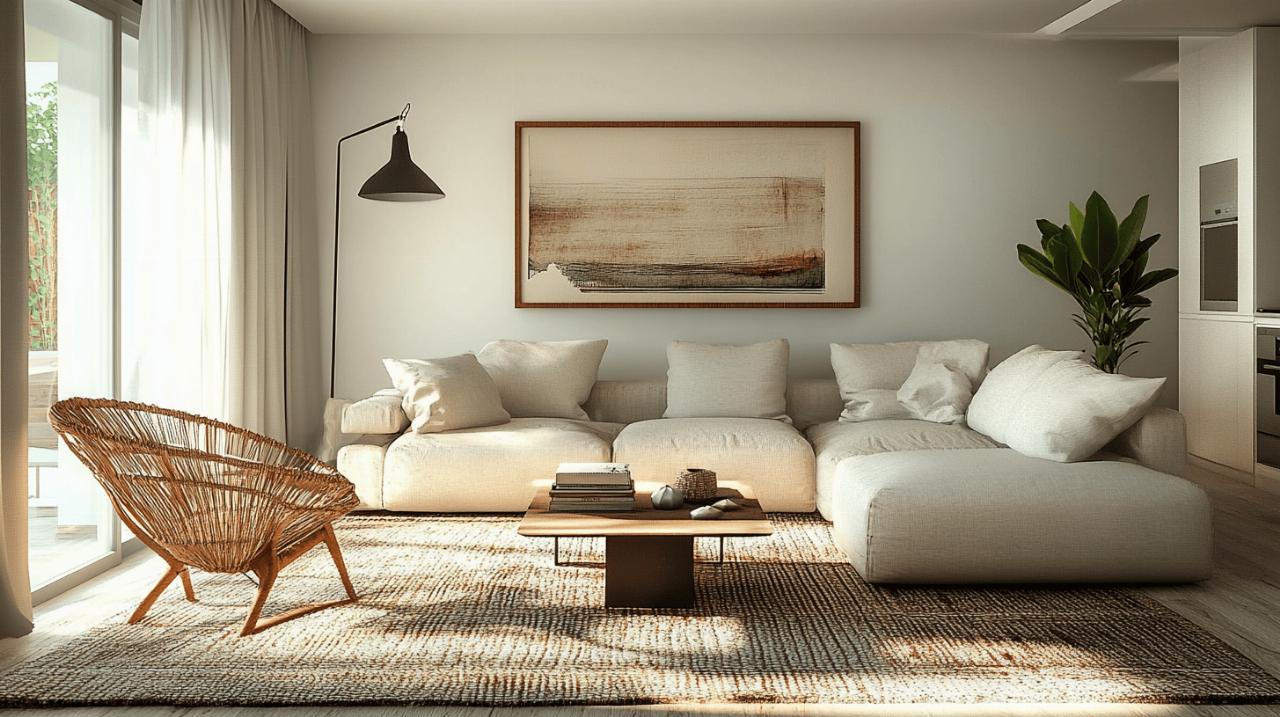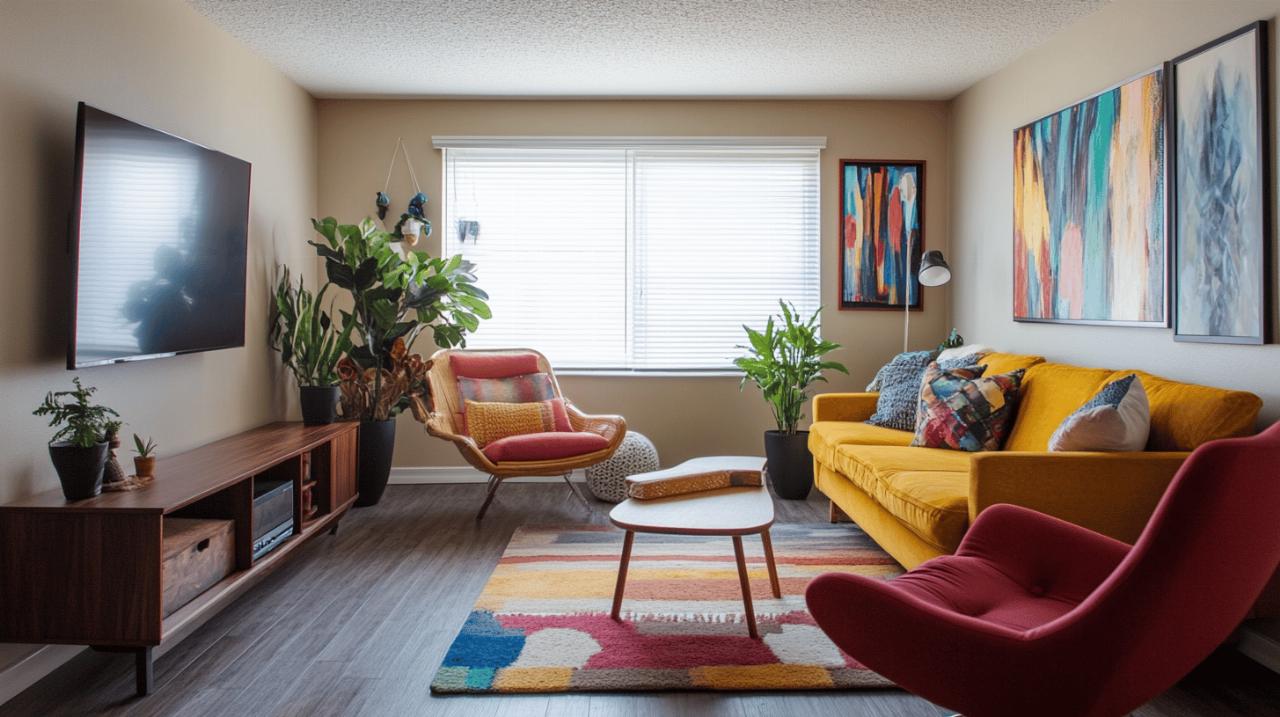When space is at a premium, decorating a small living room requires thoughtful planning and creative solutions. A well-designed compact space can feel just as comfortable and functional as a larger one—sometimes even more so! The key lies in maximizing every square inch while maintaining style and comfort. Let's explore some innovative approaches to transform your small living room into a spacious-feeling, beautiful area that meets all your needs.
Smart furniture choices for small living spaces
Selecting the right furniture is perhaps the most crucial aspect of decorating a small living room. The designers at Casa Jedo recommend investing in pieces that serve multiple purposes to maximize functionality without crowding your space. Think ottomans with hidden storage that double as coffee tables, or sleeper sofas that transform into guest beds when needed.
Multi-functional pieces that save room
Furniture that can adapt to different needs is invaluable in small spaces. Consider extendable dining tables, nesting tables that can be separated when you have guests, or wall-mounted desks that fold away when not in use. These versatile items provide functionality without permanently claiming precious floor space, allowing your room to breathe and adapt to various activities throughout the day.
Scale and Proportion in Furniture Selection
Contrary to popular belief, using only small furniture pieces isn't always the best approach. What matters more is appropriate scale and proportion. Choose furniture with exposed legs to create a sense of openness, as you can see through and under these pieces. Opt for streamlined profiles rather than bulky, oversized items. A medium-sized sofa with a sleek silhouette often works better than multiple small chairs that can make a room feel cluttered.
Strategic layout and space planning
How you arrange furniture can dramatically impact how spacious a room feels. Start by mapping out your space and considering the natural pathways through the room. The goal is to create a layout that feels intentional and allows for easy movement.
Traffic flow optimization techniques
Create clear pathways through your living room by keeping at least 30 inches of walking space between furniture pieces. Avoid placing items in a way that forces people to zigzag through the room. When possible, position larger pieces along walls rather than floating them in the middle of the space. This approach maintains open sightlines across the room, contributing to a more spacious feel while ensuring practical navigation through your living area.
Zoning methods for versatile living areas
Even in small spaces, creating distinct zones can help organize your living room according to different functions. Use area rugs to define a conversation area or reading nook. Arrange furniture to create natural divisions between activities, such as positioning a console table behind a sofa to separate the living area from an entryway or dining space. These subtle boundaries help organize the space visually without requiring physical walls or dividers.
Visual Tricks to Create Illusion of Space
Sometimes the perception of space matters as much as actual square footage. Several design techniques can fool the eye into perceiving a room as larger than it truly is.
Color schemes that expand small rooms
Light colors generally make spaces feel more open and airy. Consider painting walls in soft neutrals or cool hues that recede visually. Creating continuity between wall and furniture colors can also help a space feel less choppy and more expansive. If you love bold colors, incorporate them through accessories rather than large furniture pieces or entire walls. A monochromatic color scheme with varying textures can add interest while maintaining a sense of spaciousness.
Mirror placement for spatial enhancement
Mirrors are powerful tools for visually doubling your space. Position mirrors to reflect light sources or windows, which amplifies both light and the perception of space. A large mirror leaning against a wall or a gallery of smaller mirrors can create a striking focal point while making your living room feel more open. Consider placing mirrors opposite your most attractive views to reflect and essentially duplicate those pleasant vistas.
Storage solutions for clutter-free living
Nothing makes a small space feel smaller than clutter. Thoughtful storage solutions are essential for maintaining a tidy, spacious-feeling living room.
Hidden storage ideas for everyday items
Seek out furniture that conceals everyday items. Coffee tables with drawers, side tables with cabinets, and media consoles with closed storage compartments help keep remotes, magazines, and other necessities close at hand but out of sight. Consider hollow ottomans or benches where you can stash extra blankets, games, or seasonal items. When everyday objects have designated hiding spots, your space remains visually calm and uncluttered.
Vertical storage opportunities
When floor space is limited, look upward. Tall, narrow bookcases maximize storage while taking up minimal floor area. Floating shelves installed above doorways or windows tap into often-overlooked spaces. Wall-mounted cabinets provide closed storage without consuming valuable floor real estate. Remember to leave some open space on shelves rather than packing them full—this balanced approach provides the storage you need while maintaining visual breathing room.
Lighting design for small living rooms
Proper lighting can transform how spacious a room feels, highlighting its best features while creating atmosphere and functionality.
Layered lighting approaches
Incorporate multiple light sources at different heights to create dimension in your space. Combine overhead lighting with table lamps, floor lamps, and wall sconces to eliminate dark corners that can make a room feel smaller. Adjustable fixtures allow you to direct light where needed for different activities. Dimmers give you control over the intensity, allowing you to adapt the ambiance to various situations and times of day.
Window treatments to maximize natural light
Natural light is perhaps the most effective way to make any space feel larger. Choose window treatments that allow maximum light while providing privacy when needed. Consider sheer curtains that filter light beautifully, or blinds that can be fully opened during the day. Hang curtains close to the ceiling and extend the rod beyond the window frame—when open, this technique allows the entire window to be exposed, maximizing light while creating the illusion of larger windows and higher ceilings.




